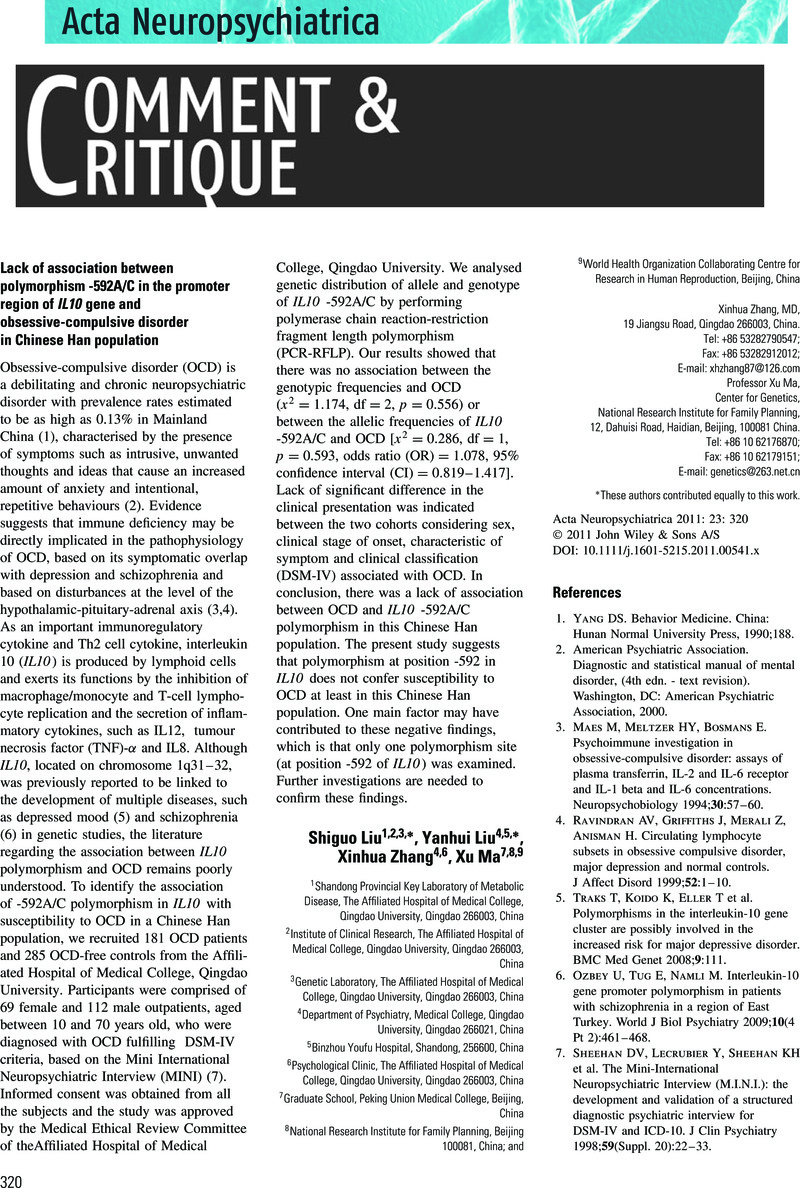No CrossRef data available.
Article contents
Lack of association between polymorphism -592A/C in the promoter region of IL10 gene and obsessive-compulsive disorder in Chinese Han population
Published online by Cambridge University Press: 24 June 2014
Abstract
An abstract is not available for this content so a preview has been provided. Please use the Get access link above for information on how to access this content.

- Type
- Comment & Critique
- Information
- Copyright
- Copyright © Cambridge University Press 2011
References
2.American Psychiatric Association. Diagnostic and statistical manual of mental disorder, (4th edn. - text revision). Washington, DC: American Psychiatric Association, 2000.Google Scholar
3.Maes, M, Meltzer, HY, Bosmans, E.Psychoimmune investigation in obsessive-compulsive disorder: assays of plasma transferrin, IL-2 and IL-6 receptor and IL-1 beta and IL-6 concentrations. Neuropsychobiology 1994;30:57–60.CrossRefGoogle ScholarPubMed
4.Ravindran, AV, Griffiths, J, Merali, Z, Anisman, H.Circulating lymphocyte subsets in obsessive compulsive disorder, major depression and normal controls. J Affect Disord 1999;52:1–10.CrossRefGoogle ScholarPubMed
5.Traks, T, Koido, K, Eller, T et al. Polymorphisms in the interleukin-10 gene cluster are possibly involved in the increased risk for major depressive disorder. BMC Med Genet 2008;9:111.CrossRefGoogle ScholarPubMed
6.Ozbey, U, Tug, E, Namli, M.Interleukin-10 gene promoter polymorphism in patients with schizophrenia in a region of East Turkey. World J Biol Psychiatry 2009;10(4 Pt 2):461–468.CrossRefGoogle Scholar
7.Sheehan, DV, Lecrubier, Y, Sheehan, KH et al. The Mini-International Neuropsychiatric Interview (M.I.N.I.): the development and validation of a structured diagnostic psychiatric interview for DSM-IV and ICD-10. J Clin Psychiatry 1998;59(Suppl. 20):22–33.Google ScholarPubMed


